Click on images to enlarge
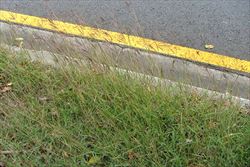
roadside infestation (Photo: Sheldon Navie)
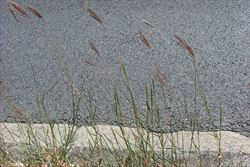
habit (Photo: Sheldon Navie)
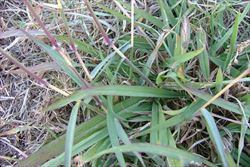
stems and leaves (Photo: Sheldon Navie)

close-up of stem, showing tuft of hairs on its joint, and upper leaf (Photo: Sheldon Navie)
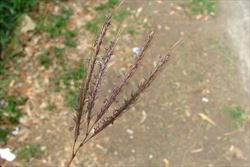
branched seed-head (Photo: Sheldon Navie)

close-up of flower spikelets (Photo: Sheldon Navie)

close-up of seeds (Photo: Jose Hernandez at USDA PLANTS Database)
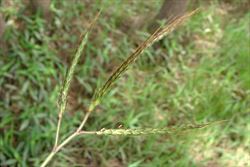
a seed-head of the very similar Angleton grass (Dichanthium aristatum), showing the distinctive covering of fine hairs on the stalks of its branches (Photo: Sheldon Navie)
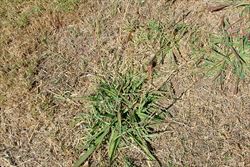
infestation growing in a mown area (Photo: Sheldon Navie)
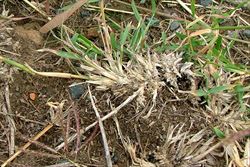
rhizomes and stem bases (Photo: Sheldon Navie)
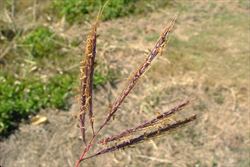
branched seed-head (Photo: Sheldon Navie)
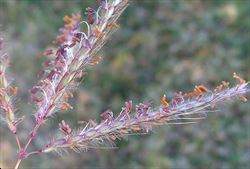
close-up of hairy flower spikelets with stamens (Photo: Sheldon Navie)
Scientific Name
Dichanthium annulatum (Forssk.) Stapf
Family
Gramineae (South Australia)Poaceae (Queensland, New South Wales, the ACT, Victoria, Tasmania, Western Australia and the Northern Territory)
Common Names
bluestem, Diaz bluestem, Hindi grass, Hindigrass, Kleberg bluestem, Kleberg's bluestem, marvel grass, ringed dichanthium, sheda grass, shedagrass, two flowered goldenbeard, two-flowered goldenbeard, vunda blue grass
Origin
Native to Africa (i.e. Algeria, Egypt, Libya, Morocco, Tunisia, Ethiopia, Somalia, Kenya, Tanzania, Uganda, Mali, Senegal, Botswana, Namibia and South Africa), the Arabian Peninsula (i.e. Bahrain and Saudi Arabia), western Asia, the Indian Sub-continent (i.e. India, Nepal and Pakistan) and south-eastern Asia (i.e. Myanmar, Thailand, Indonesia, Malaysia and Papua New Guinea).
Naturalised Distribution
Widely naturalised in the Northern Territory and in northern, central and south-eastern Queensland.
Also naturalised overseas in southern USA (i.e. Texas and Louisiana), Hawaii and several other Pacific islands (e.g. Fiji, New Caledonia and Niue).
Notes
Sheda grass (Dichanthium annulatum) is regarded as an environmental weed in the Northern Territory, where it is highly invasive in arid wetlands. It is not currently widespread, but infestations have been recorded at Illparpa Swamp and various other locations around Alice Springs (e.g in the Georgina River system and at Running Waters on the Finke River). It may compete aggressively with important native grasses (e.g. Eriachne benthamii) in this region.
This species is also regarded as being invasive in Texas, in the USA, where it escapes from pastures and outcompetes native grasses in bluestem coastal grassland communities.

